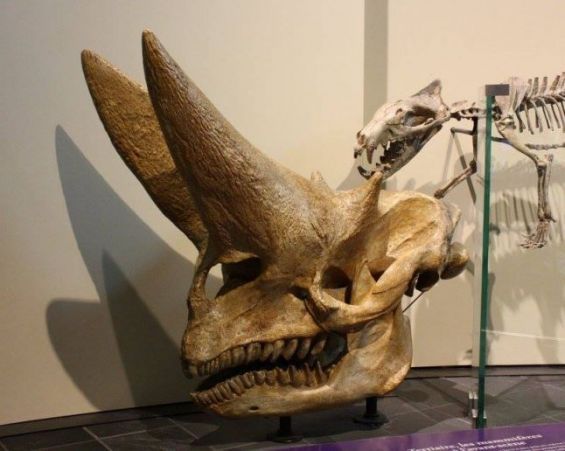55 million years ago, embrithopods lived in Morocco and most precisely in the Oulad Abdou basin, near Khouribga. Scientific journal Current Biology describes the species in a new research paper, made public June the 28th, as large mammals that looked much like rhinoceros.
Examining dental fossils found in the first lower Eocene levels of the Ouled Abdoun phosphate basin, the study shows that embrithopods «belong to the old endemic African fauna». The discovery has been backed by the Stylolophus’ remains in the North African Kingdom.
«The embrithopods were large and strange extinct mammals that belonged, together with hyraxes and elephants, to the early megaherbivorous mammalian fauna», said Emmanuel Gheerbrant of CNRS-MNHN in Paris, France.

According to him, embrithopods «inhabited the island Africa, well before the arrival about 23 million years ago of the Eurasian ungulate lineages such as the artiodactyls, including giraffes, buffalos, hippopotamus, and antelopes, and the perissodactyls, including zebras and rhinoceros».
Related to elephants and sea cows for a reason
What is very important about the Morocco Stylolophus dental remains is that they have given an insight about the origins of embrithopods. With fossils found in the past in Africa and Turkey, scientists couldn’t determine the relationship between embrithopods and sea cow and elephants.
In fact, Gheerbrant explained that the Morocco fossils confirms that Stylolophus are «basal embrithopods», showing that the species is very ancient that it predates the «divergence of the sea cows and elephants».
 The lower jaw of Stylolophus minor, holotype of the new species./Ph. Philippe Loubry (MNHN). Drawing by Charlène Letenneur (MNHN)
The lower jaw of Stylolophus minor, holotype of the new species./Ph. Philippe Loubry (MNHN). Drawing by Charlène Letenneur (MNHN)
«Comparative anatomy of the new Moroccan species shows that the highly specialized embrithopod teeth derived from the ancestral dental morphology of all paenungulates, a clade including elephants, sea cows, and hyraxes, with the W-crested molars seen in some of the oldest hyracoids», said Gheerbrant.
«The specialized design of the teeth with two transverse ridges, known in the most advanced forms such as Arsinoitherium, is a convergence of the embrithopods and the extant group of tethytheres, including manatees and elephants, towards leaf eating, which was favored by the ancient herbivorous niches available on the African island».
To put it in other words, analyzing one of the dental fossils shows that it is the first of its kind to have «enlarged and anteriorly inclined incisors, in the form of incipient tusks» just like early ancestors of elephants.
The findings suggest that Embrithopoda is a species that is originally from Africa. They also indicate that embrithopods arrived in Turkey and Euroasian seas after a «dispersal of an African ancestor resembling the Moroccan Stylolophus across the sea.




 chargement...
chargement...












